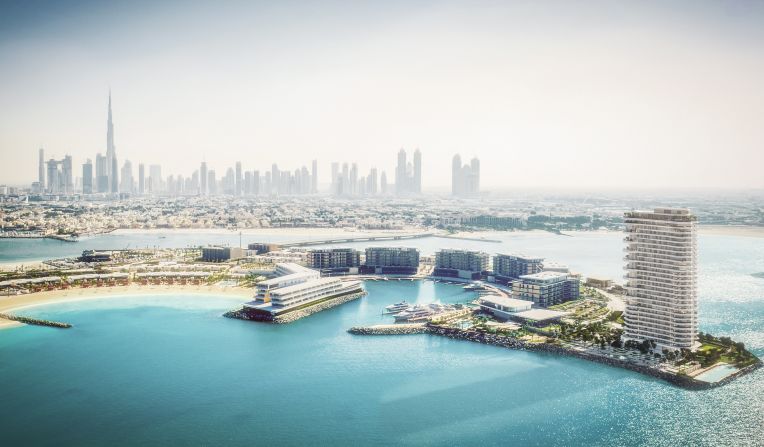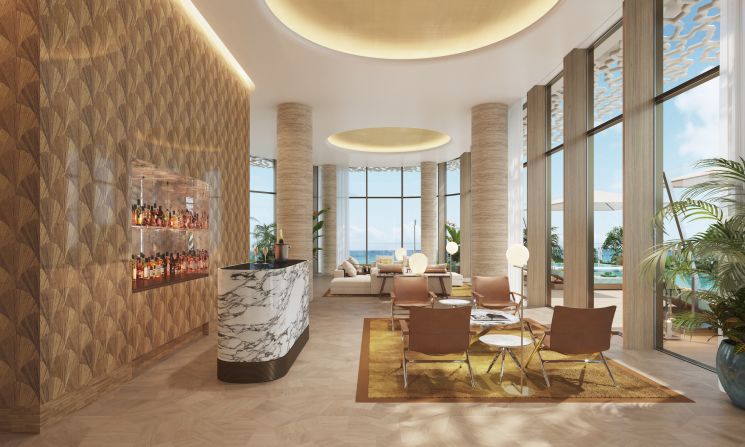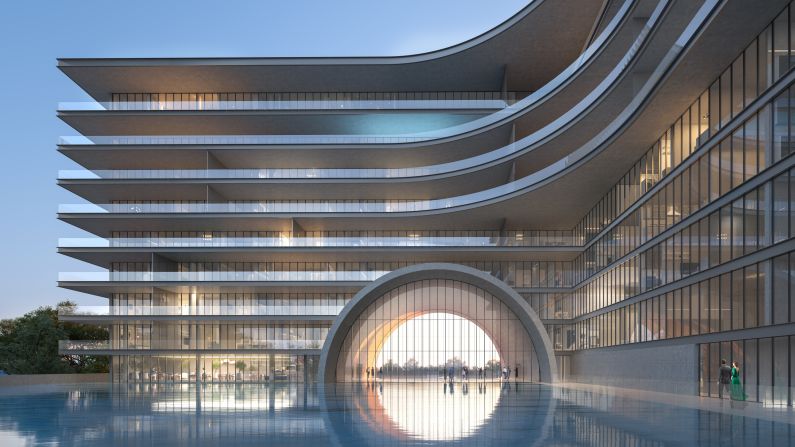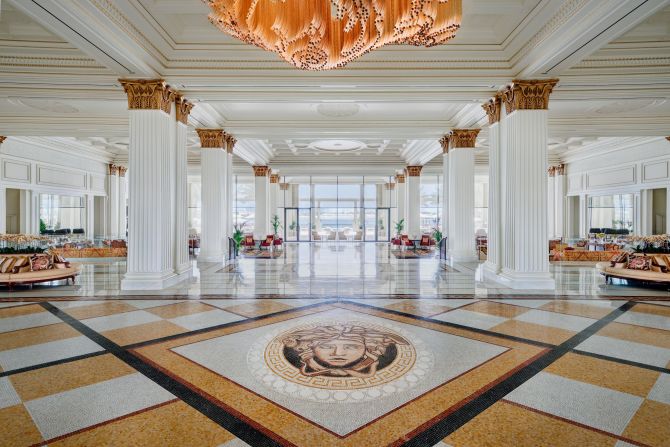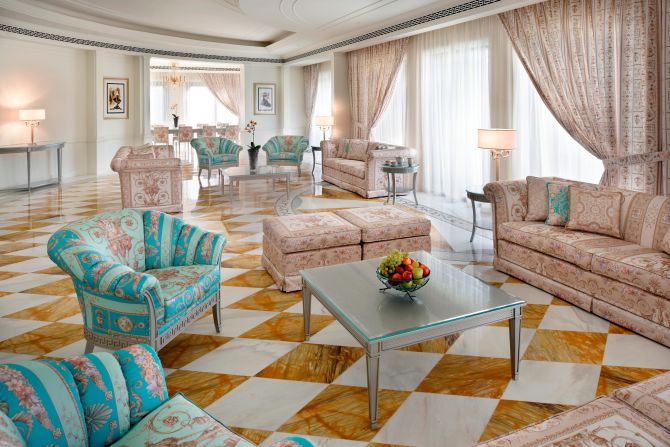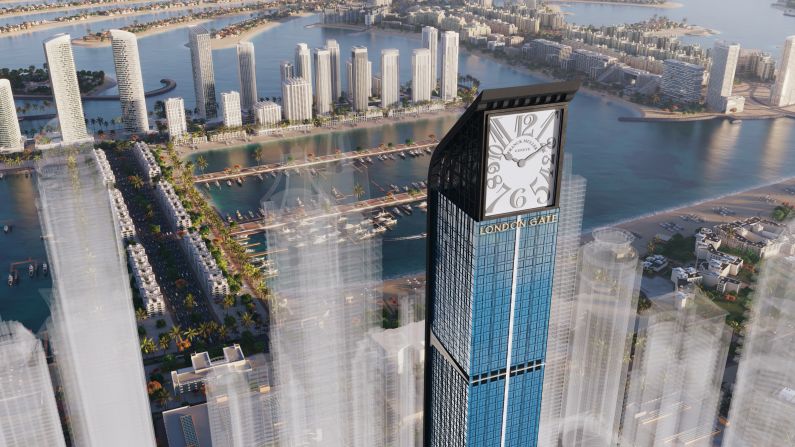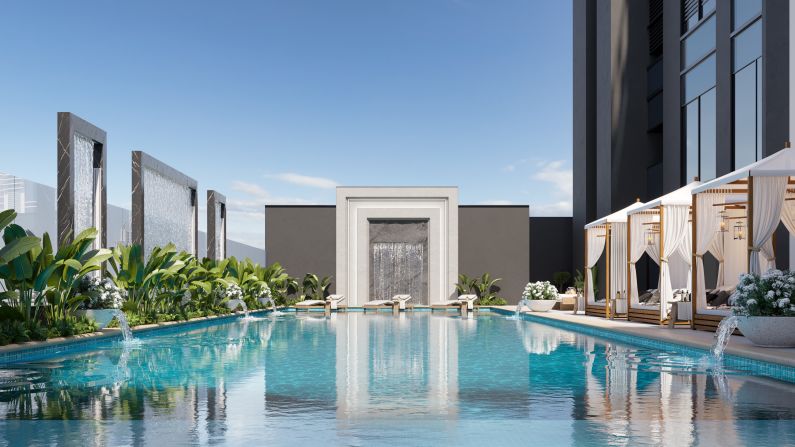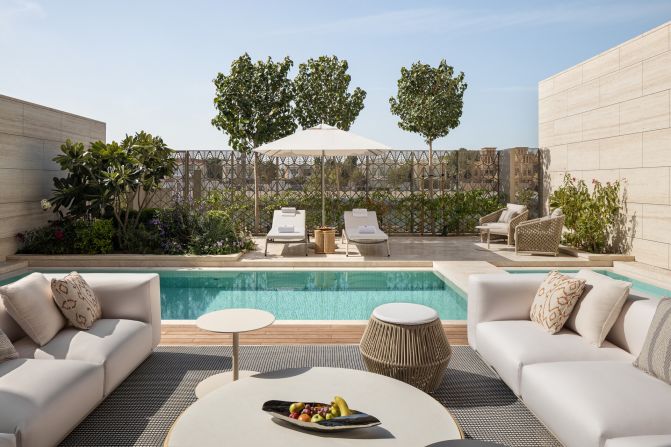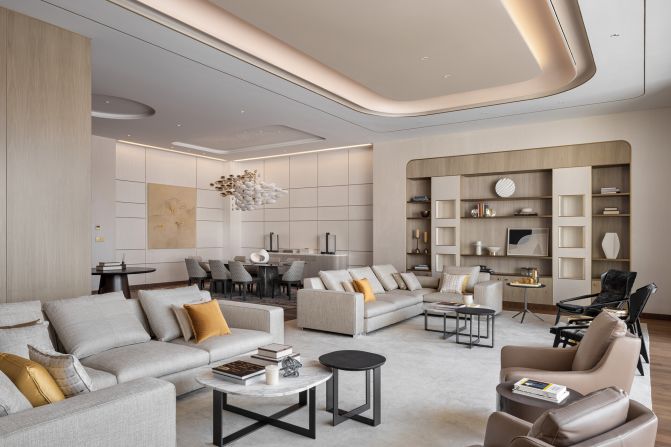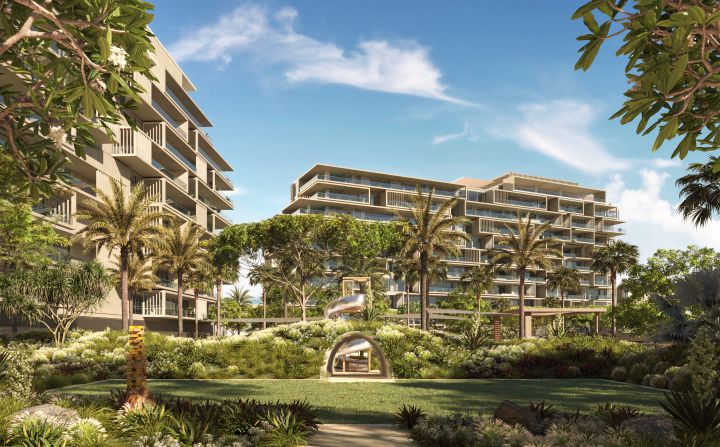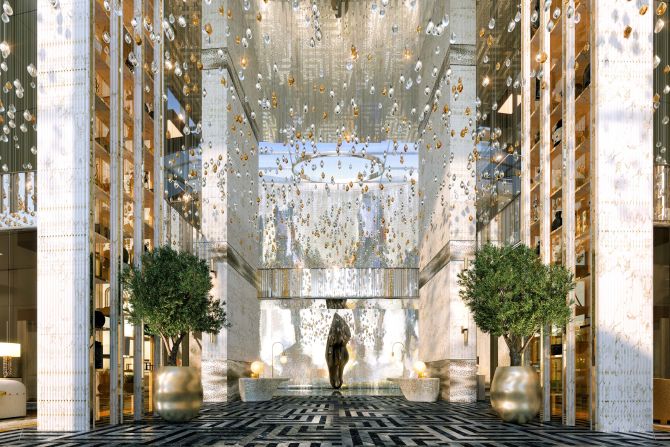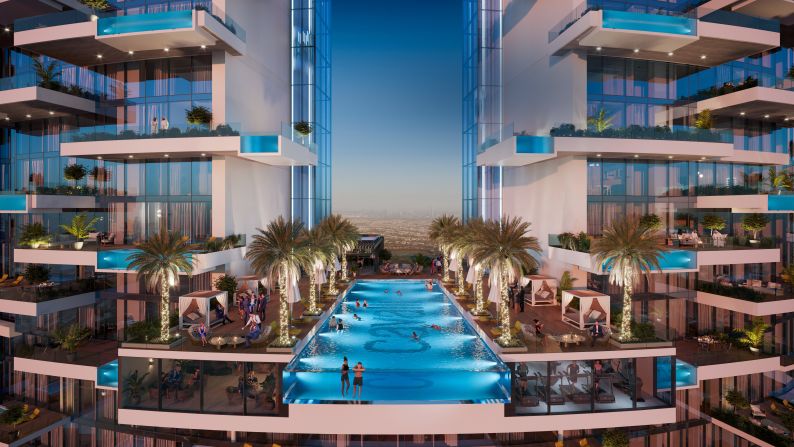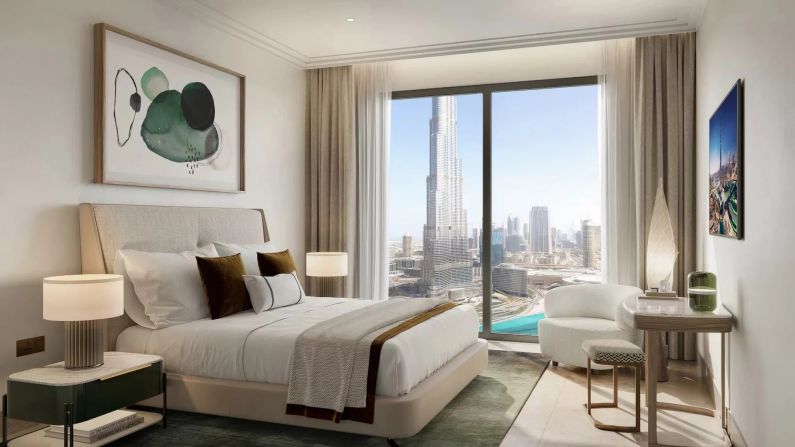Editor’s Note: This CNN series is, or was, sponsored by the country it highlights. CNN retains full editorial control over subject matter, reporting and frequency of the articles and videos within the sponsorship, in compliance with our policy.
Armani… Bulgari… Versace…
The list reads like the directory of a designer shopping mall. But these are not storefronts: they’re addresses.
Branded residences are residential complexes that incorporate the design and service style of their namesake brand, often sitting beside or within a brand’s hotel or resort — and a growing number of luxury fashion names are jumping on the real estate bandwagon.
The number of branded residence schemes has increased by around 160% in the past decade according to global real estate company Savills, and is expected to nearly double globally by 2030. The city driving this trend? Dubai. It has more luxury branded residences than anywhere else in the world, knocking South Florida, the sector’s longstanding leader, off the top spot last year.
While the number of projects in Dubai is soaring — 51 completed, and 48 in the pipeline, according to Savills — so are the prices. The Bulgari Lighthouse consists of 31 four- to five-bedroom “penthouses” over 27 floors, topped with a three-level 13,000-square-foot “Sky Villa.” The latter sold off-plan for $112 million in February 2023, just a month after the property was unveiled, becoming the city’s most expensive apartment at the time. Over the first half of 2023, the residence sold 20 units, for a total of 2.15 billion AED ($585.3 million).
The designer brand plays a vital role in its desirability, said Patricia Viel, CEO of ACPV ARCHITECTS Antonio Citterio Patricia Viel, the firm behind the Bulgari Lighthouse.
“Real estate of this character, this level, it is not only a nice building,” said Viel, adding that these residences have operational requirements more similar to a resort or hotel than an apartment block. “You need a brand that guarantees that quality of service.”
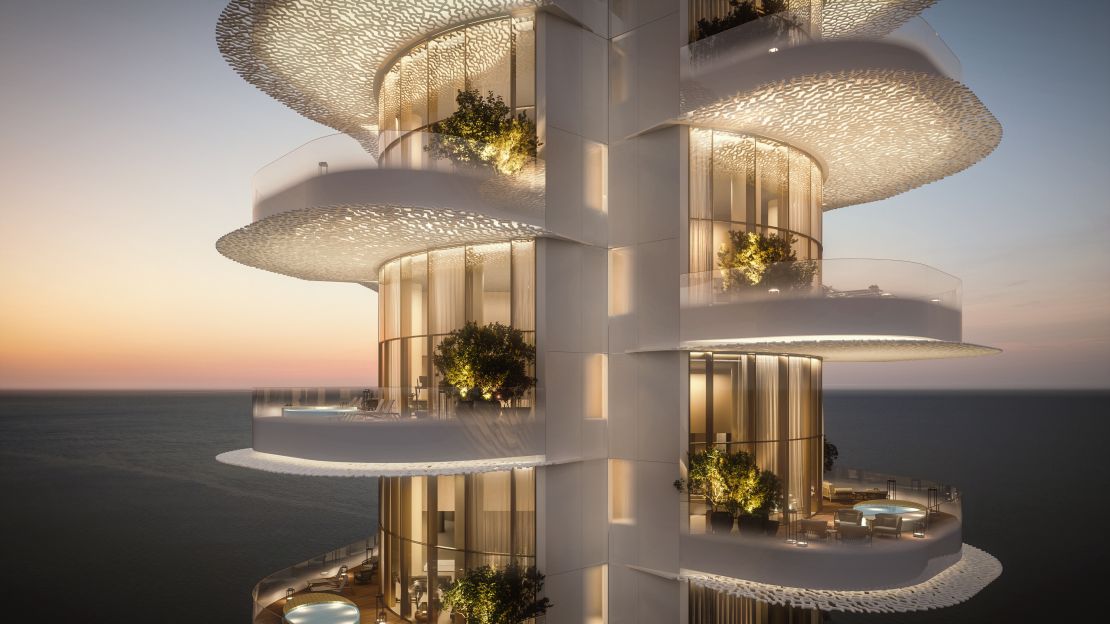
A “sense of ownership”
ACPV ARCHITECTS began working with Bulgari on its hospitality concepts in 2000, designing everything from the brand’s first hotel in Milan in 2004 to the Bulgari Lighthouse in Dubai. Bulgari took a “residential approach” to its hotels, and rooms and suites were designed with a “sense of ownership,” said Viel — so the transition into branded residences was a natural one, she added.
For many of the typical buyers of these branded properties, it is not their first home — or even their second — creating a different relationship with the property where convenience is key, said Viel: “The service component is extremely important for someone that is owning six or eight different houses in the world.”
Aspects such as building management and operations become increasingly important, as does purchasing a property that comes fully furnished.
These residences, often adjacent to a branded hotel or resort, gain access to all the luxury hospitality facilities, but with complete privacy in their living space. And for resorts like Bulgari Dubai, there’s a range of lifestyle offerings beyond the typical gym and spa, such as Michelin-star restaurants and world-class bars, which turns the resort into a destination for the local community and tourists.
“The privilege of being able to ‘own the place’ somehow and have access to the very heart of the social life, to (these buyers) is important,” said Viel.
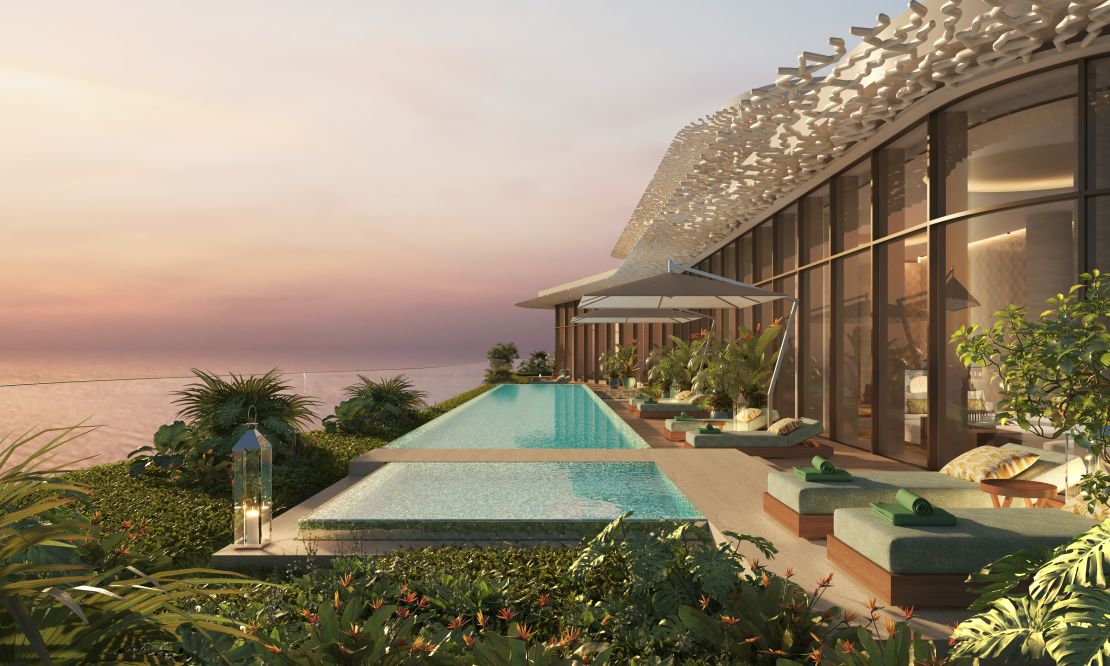
Buying “instant access to the Dubai lifestyle” is a big motivator for many of the high net-worth individuals, said Faisal Durrani, head researcher at Knight Frank Middle East, an independent real estate consultancy. Dubai is ahead of prime real estate locations for second homes such as Aspen, Miami, the Algarve, and the Bahamas, according to Knight Frank’s 2023 Prime International Residential Index.
For luxury brands, the move into real estate helps them to diversify their income as they make money through licensing or management fees, while for developers, the branding means higher property prices. On average, branded residences command a 30% premium compared to similar-quality properties in the same location. But in Dubai, that premium is significantly higher: 86%, according to Knight Frank.
Attention to detail
The property market in Dubai is also heavily geared towards “off-plan” sales, where buyers purchase a home before it’s built, based on the residence location, floor plans, renders and specification details. The deposits for off-plan purchases can often amount to more than $1 million for prime real estate.
As a relatively young market — the city has only been open to international buyers and investors since 2002 — Dubai real estate has experienced volatility over the past two decades, fueled by speculative “buy-to-flip” activity and an excess in property supply, said Durrani.
Branded residences can help offset these risks by offering a perceived reassurance on the quality and service, particularly for international buyers, said Rosa Piro, senior business development director at Arada, a property developer in the United Arab Emirates: “Buyers in Dubai have a tendency to like brands and trust brands.”
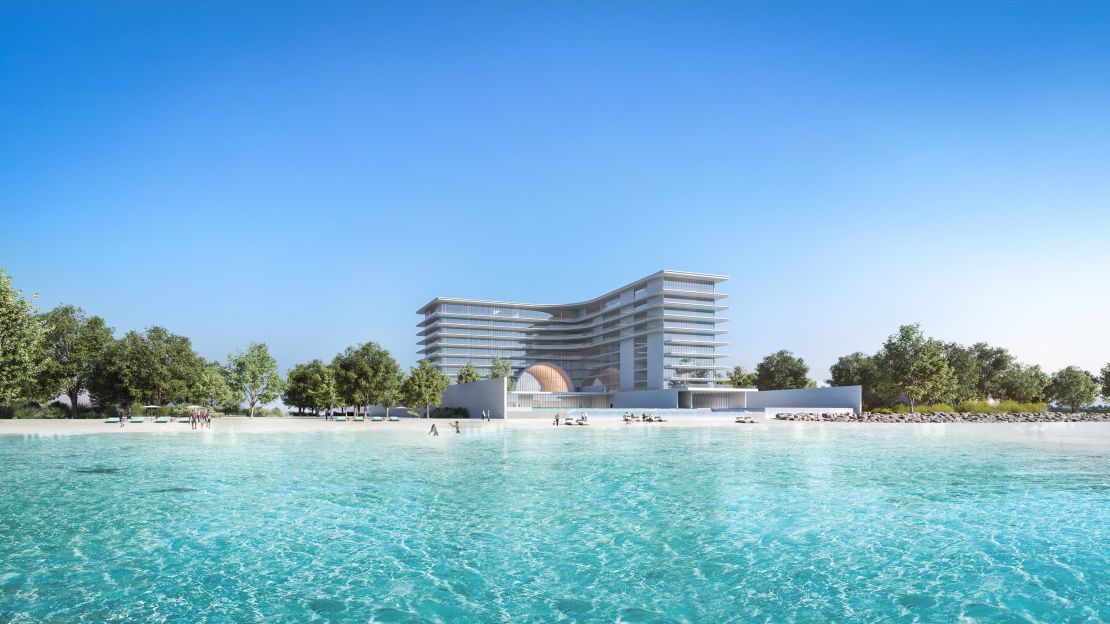
Arada is embarking on its first branded residence project, unveiled earlier this month: the Armani Beach Residences on the much sought-after Palm Jumeirah island, designed by award-winning Japanese architect Tadao Ando.
According to Arada, the Armani Beach Residences are priced 63% higher, on average, per square foot, than other branded residences on Palm Jumeirah, with two-bedroom residences starting from $5.9 million. Arada anticipates the building will be complete by the end of 2026.
Piro believes the Armani name is more than just a branding exercise for the project. “Both of our partners are very actively and personally involved in the project,” she said, adding that “Mr. Armani himself is involved in the design of the apartments and adds his own touch.”
As the developer, Arada oversees the construction and project logistics, including the coordination between the architect and brand — so it’s in the details that Armani is adding value, said Piro: “For example, on the renders that we were approving, (the Armani team) were looking at the number of waves that the curtains were making.”
Those purchasing one of the two penthouses, one on each of the towers, will get to experience that attention to detail firsthand: the apartment comes with a trip to Milan, a stay in the Armani Hotel, and a meeting with Giorgio Armani and the interior design team to discuss their style preferences, “so they have a full 360-degrees experience of the Armani world,” said Piro.
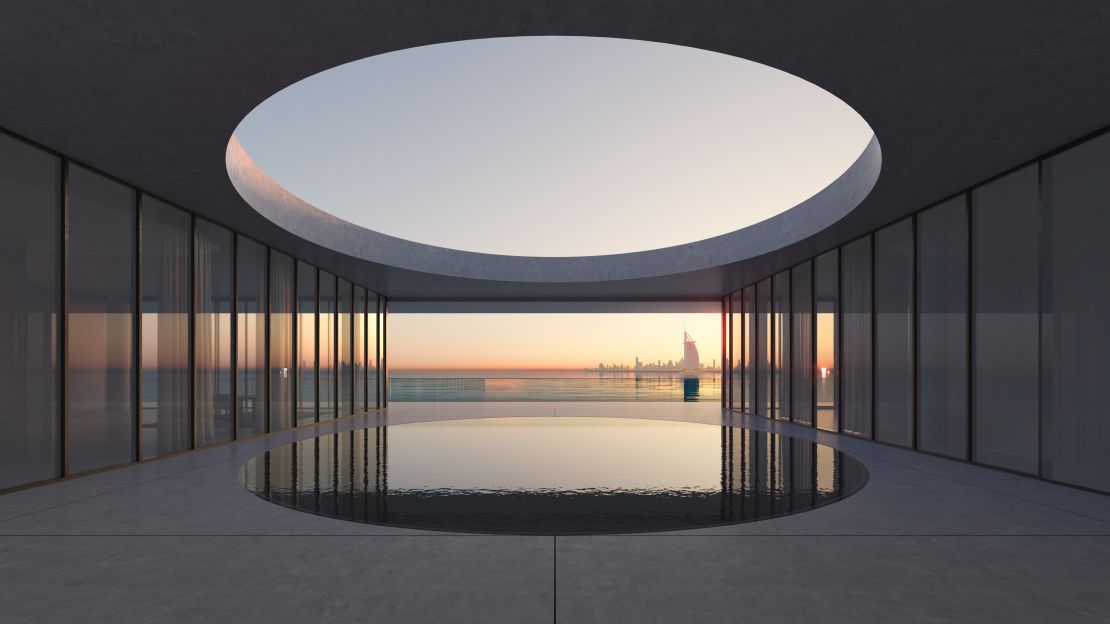
Durrani said that the success of the luxury property market has lifted the entire sector: by September 2023, Dubai’s real estate market was up 19% year-on-year, according to the latest figures available from Knight Frank.
The imbalance of supply and demand has also been reversed, due to construction delays during Covid, and as more international buyers purchase homes to live in, said Durrani. Dubai introduced its “Golden Visa” in 2019 in a bid to attract new talent and investment in the city, and its population has continued to grow rapidly post-pandemic, increasing by 100,000 people in 2023.
While branded residences make up a small fraction of the property stock, the sector is expanding rapidly, with 3,700 units in the pipeline.
The Armani Beach Residences is just the first of many branded residence projects for Arada, which is already working on its next residence, to be unveiled later this year. “There is a big appetite from both buyers as well as the developers, to continue with branded residences,” said Piro.
